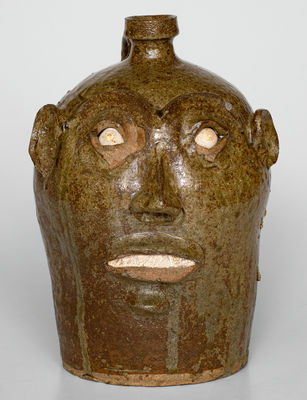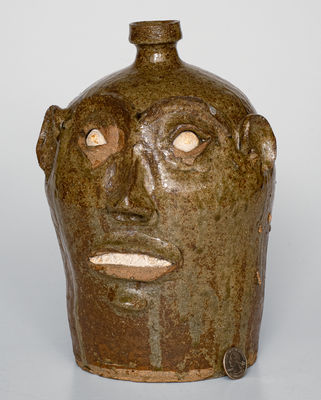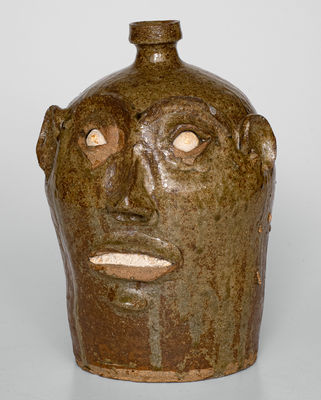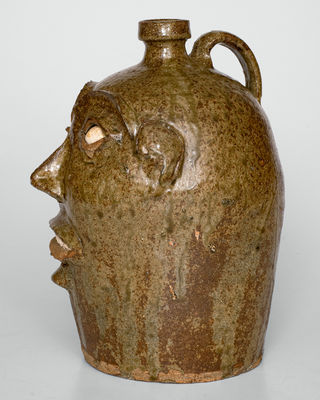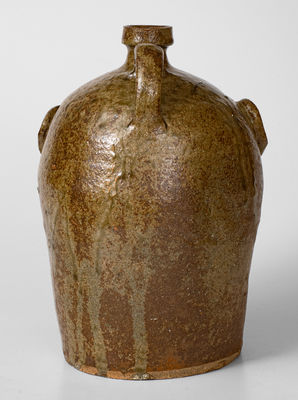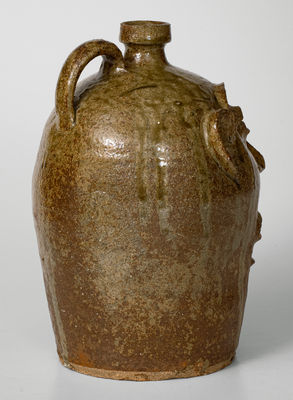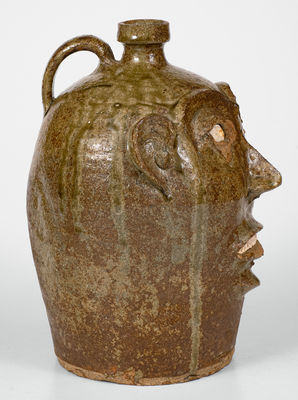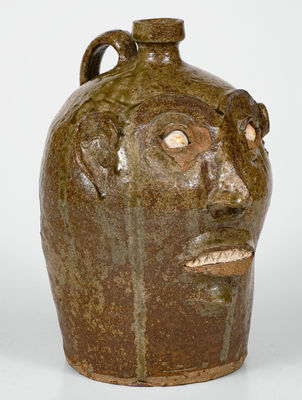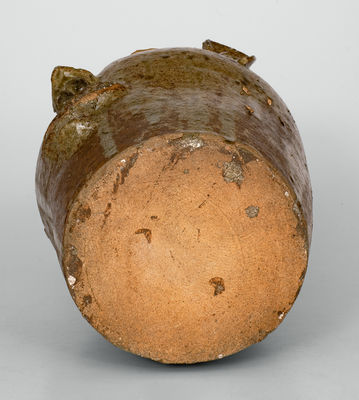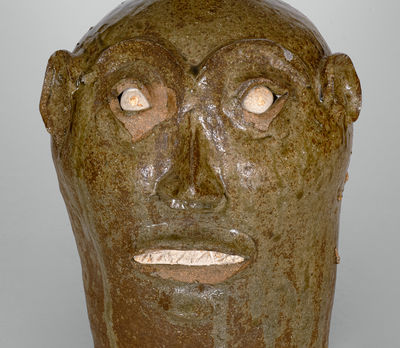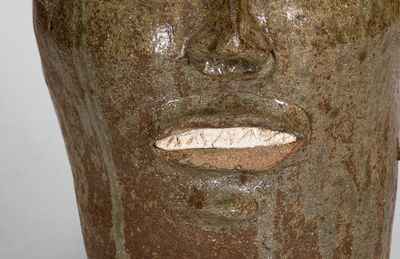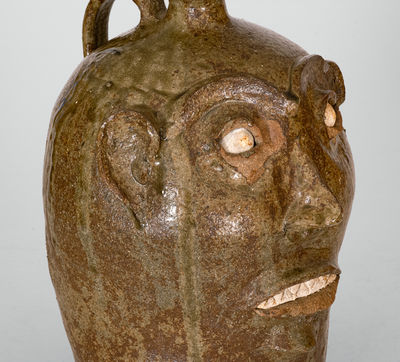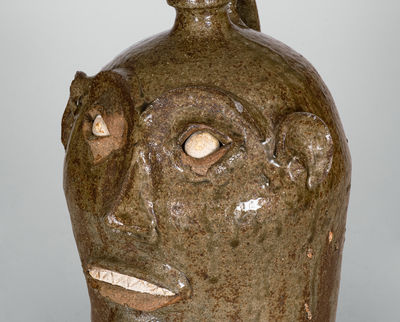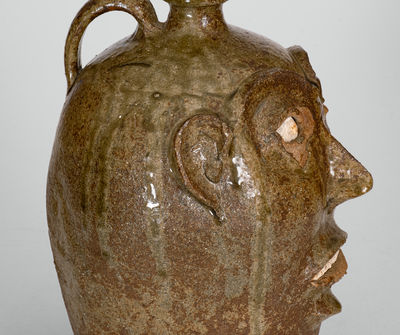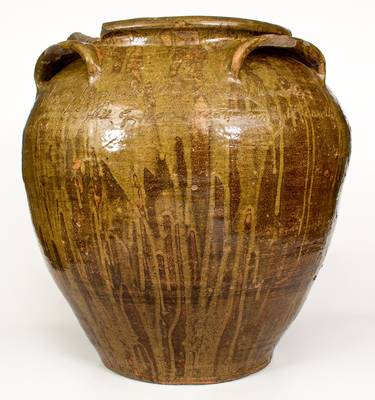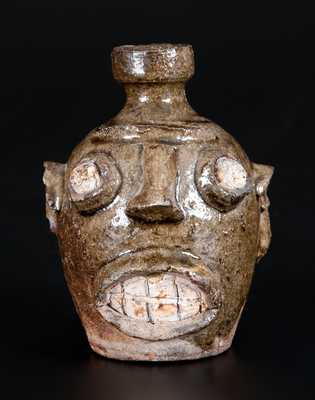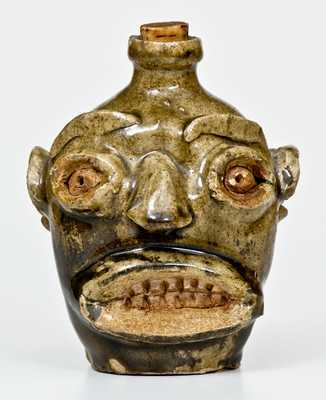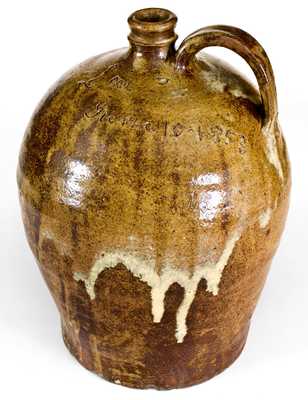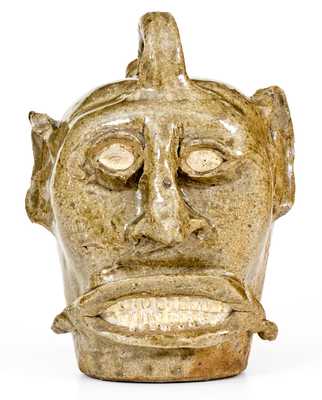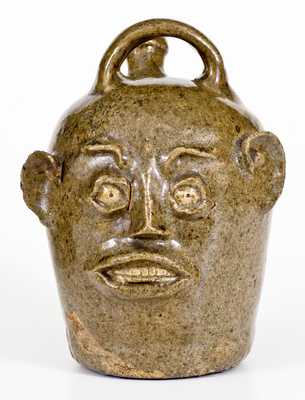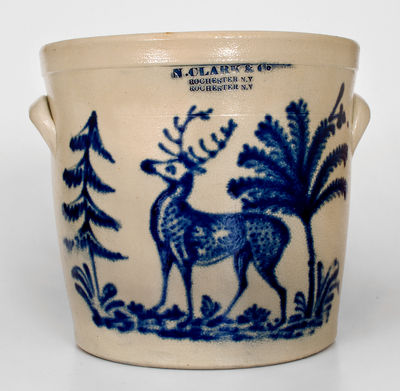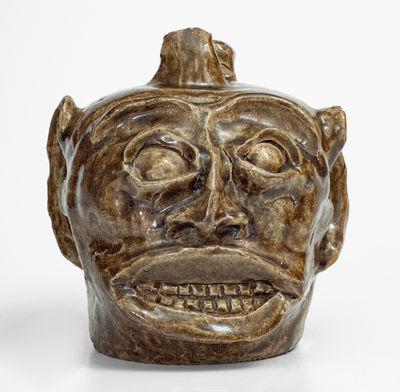Exceedingly Rare and Important Large-Sized Stoneware Face Jug with Alkaline Glaze, Edgefield District, SC, circa 1850-1880, possibly Fortune Justice, ovoid jug with narrow neck and semi-squared spout, decorated with a hand-modeled and applied clay face, including kaolin eyes with alkaline-glazed pupils, arched eyebrows, small ears with tragi, a pointed nose with deeply-carved nostrils, an open mouth bearing jaggedly-carved kaolin teeth, and a small, pointed chin. Depressions towards the base of the jug add realism to the modeling serving to create the jaw structure of the face and accentuate the cheek bones. The kaolin eyes, held in place by applied clay lids, move and rattle freely within their sockets, adding liveliness and intrigue to the face. (Anthropology professor and author, John Michael Vlach, argues that free-moving eyes were an intended and desired effect by the potter, and not merely the occasional result of the vessel's firing.) A single incised slash mark appears on the shoulder of the otherwise smooth-surfaced jug. The surface is covered in a runny, olive-colored alkaline glaze over a mottled reddish-brown ground. Potted in an exceptionally large size and surviving in outstanding condition, this work is among the finest American face vessels that we have ever offered. As the majority of Edgefield face vessels measure in the five to seven inch range, the ten-and-three-quarter inch height of this example dwarfs nearly all other known jugs. The rare sawtoothed incising of the figure's teeth possibly connects this jug to the African heritage of Edgefield's enslaved potting population. Teeth sharpening was, and continues to be, a practice popular among a number of Congolese tribes. This body modification can even be noted in the Congo's carved wooden Nkisi (power) figures, which some scholars view as a direct antecedent to the Edgefield face vessel. A highly important face jug by the same maker in the collection of the Smithsonian in Washington, D.C. bears the incised name, Joe Ranford, for its owner. A second example, lacking any inscription, is currently on display at The Philadelphia Museum of Art. Independent researcher, Corbett Toussaint, argues in her 2021 Journal of Early Southern Decorative Arts article, "Edgefield District Stoneware: The Potter's Legacy," that Joe Ranford's jug bears distinctive penmanship linking it to an Edgefield stoneware grave marker signed by African-American potter, Fortune Justice (c.1856-1898). Toussaint notes that the 1880 Federal Census lists a Joe Ranford as a "farm hand" living less than ten households away from Fortune Justice, corroborating this theory. Toussaint's compelling research offers tantalizing evidence as to the possible maker of the face jug to be auctioned and the entire group of related jugs to which it belongs. Provenance: Recently-surfaced in the Midwestern U.S. Excellent condition with a small chip to each eyebrow, a small nick to one ear, and two tiny nicks and a small area of light wear to opposite ear. H 10 3/4".

